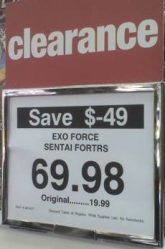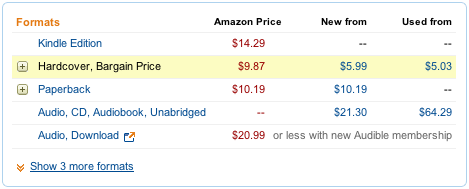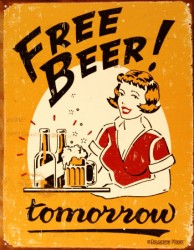
My presentation at Kaimuki Middle School
Last month, while visiting Hawaii, one of my wife’s friends asked me to come in to Kaimuki Middle School in Honolulu, Hawaii, to talk to the gifted & talented Language Arts class there. She wanted me to speak about writing and what it’s like to be an author. At first, I was nervous, and wasn’t quite sure what to say, or if I’d have enough to talk about, or if anyone would ask any questions. Well, I shouldn’t have been concerned: the class was very receptive, asked a number of very intelligent and perceptive questions, and I think the 45-minute presentation went very well.
Mrs. Hansen (in the photo above) welcomed me to her classroom, and the children gave me the nice lei you can see around my neck in the photo. She had read parts of my newest (and most young adult-friendly) novel, The Twiller, to the class, and they seemed to like the chapters that took place on the exotic planet of “Huh? Why E?”
While I was worried that I wouldn’t have enough to talk about, the time really flew by — which is odd, since I remember sitting as a student in many classrooms and feeling like the class period would never end! So, before I knew it, half of the period had gone by, and I asked the students if they had any questions.
Not only were the students very eager and inquisitive in asking a number of questions, but many of the questions were very intelligent and insightful. My favorite was probably: “If you enjoy writing so much, why did you go to law school and become a lawyer?” — which is a difficult question to answer! Students also asked me about the title of my first novel (Right Ascension), how I designed the covers of my novels (which led to discussion of the Hubble Space Telescope and the observatory on Mauna Kea, Hawaii), about the writing process, how I came up with my characters, and plenty of other excellent questions. I was very impressed by how intelligent, mature, curious, and eager the students were — I had to remind myself that they were only in middle school!
I definitely got a lot out of the presentation, and I hope the students did as well. Several students expressed interest in reading and writing, and I tried to help fuel their passions by explaining how much enjoyment I’ve derived from reading and writing in my life. I even got a couple of requests for my next book, including “something with vampires.” 😉
At least one student went home and asked his father to order The Twiller from my website — so thank you for that, Chance, and I hope you enjoy the book! (Since he ordered express shipping and I was still nearby in Honolulu, I hand-delivered his signed book to him the next day.)
Once I returned home, I was pleasantly surprised to receive 25 hand-written thank-you notes from the students! I am very grateful to each of you for writing me, and it was my pleasure to come by and speak to your class. Several students asked questions in their letters, so I’ll try to answer them here:
- Aileen K.: Keep writing! And, yes, I do all my writing on the computer too.
- Aileen Z.: You’re right, the Twiller does help someone in the book!
- Quinn: Could you give me some tips on being a lawyer? Let’s see, I’d say that you should practice doing research and debating (both written and oral).
- Alyssa: You’re very welcome, and I encourage you to keep expressing yourself through writing.
- Colin: I’m glad you like “Huh? Why E?”
- Emily: I hope you enjoy The Twiller, and please thank your aunt for me for buying a copy of Right Ascension!
- Joseph: I will definitely remember my visit to your school!
- Madeline: I hope my tip about studying your characters before you start writing helps you in your own stories. And I’m glad you liked the covers!
- Caryssa: I’m overjoyed that anything I said helped inspire you to write and helped you learn how to grab the reader right from the start.
- Kaycee: I’m glad I was able to motivate you, and I’m sure you can become an author someday, if that’s what you put your mind to.
- Rei: I’m glad you found the event “interesting and fun” instead of boring! Good luck with your singing and dancing career.
- Nathan: I’m excited to hear that I helped set your brain “alight” and provided a “spark.” Great imagery!
- Leslie: It did take some balancing and time management to write my second novel while I attended law school…
- Moriah: I’m thrilled to hear that you’ve already read two of my novels! I’m glad you found them “cool and sci-fi-ish.”
- Joy: Is it harder to write a series or a single book? What is the glossy coating on your book covers? When writing a series, you can use some of the same characters and elements of the same “universe” that you’ve already created, so in that sense it’s easier. But, that challenges you to explore new aspects of the characters and have them grow and develop, and come up with enough new material to keep the story interesting, so that aspect is challenging. As for the book covers, the printer I use does the glossy coating on the covers, and I really like the way they look.
- Korynn: I’m very glad to help inspire you, and I liked your drawing of my book covers!
- Hiroyo: Thanks for the idea to write my next book about vampires! I wish I could speak Japanese like you can, but all I know is: nihongoga wakarimasen.
- Anya: It was my pleasure to meet all of you and answer your questions.
- Parker: I’m glad you learned about the importance of creating good characters, and I hope that helps your writing.
- Chance: Thanks again for having your dad buy my book, and I’m glad to hear that you want to write.
- Jocelyn: I’m happy to hear that some of what I said was useful for your Uncle Phil. I have more info about the electronic publishing process on my blog here.
- Justin: It can easily take a year to write a 75,000-word novel, but I started out by writing short stories and newspaper articles that took much less time!
- Raellis: I’m glad you enjoyed the places I used in The Twiller — they’re mostly the places where I’ve lived or spent a lot of time (like Fleur Ida, El Leigh, and Huh? Why E?).
- Kalena: I do enjoy visiting “Huh? Why E?” And I’m sure if you continue to “work hard and think hard,” you’ll make a great fashion designer.
- Celine: I’ve always been fascinated by NASA pictures and astronomy — you can find a lot of great NASA pictures at their website.
Thanks again to Mrs. Hansen and everyone in the class for the very kind letters and for making my experience in your classroom a great one!






